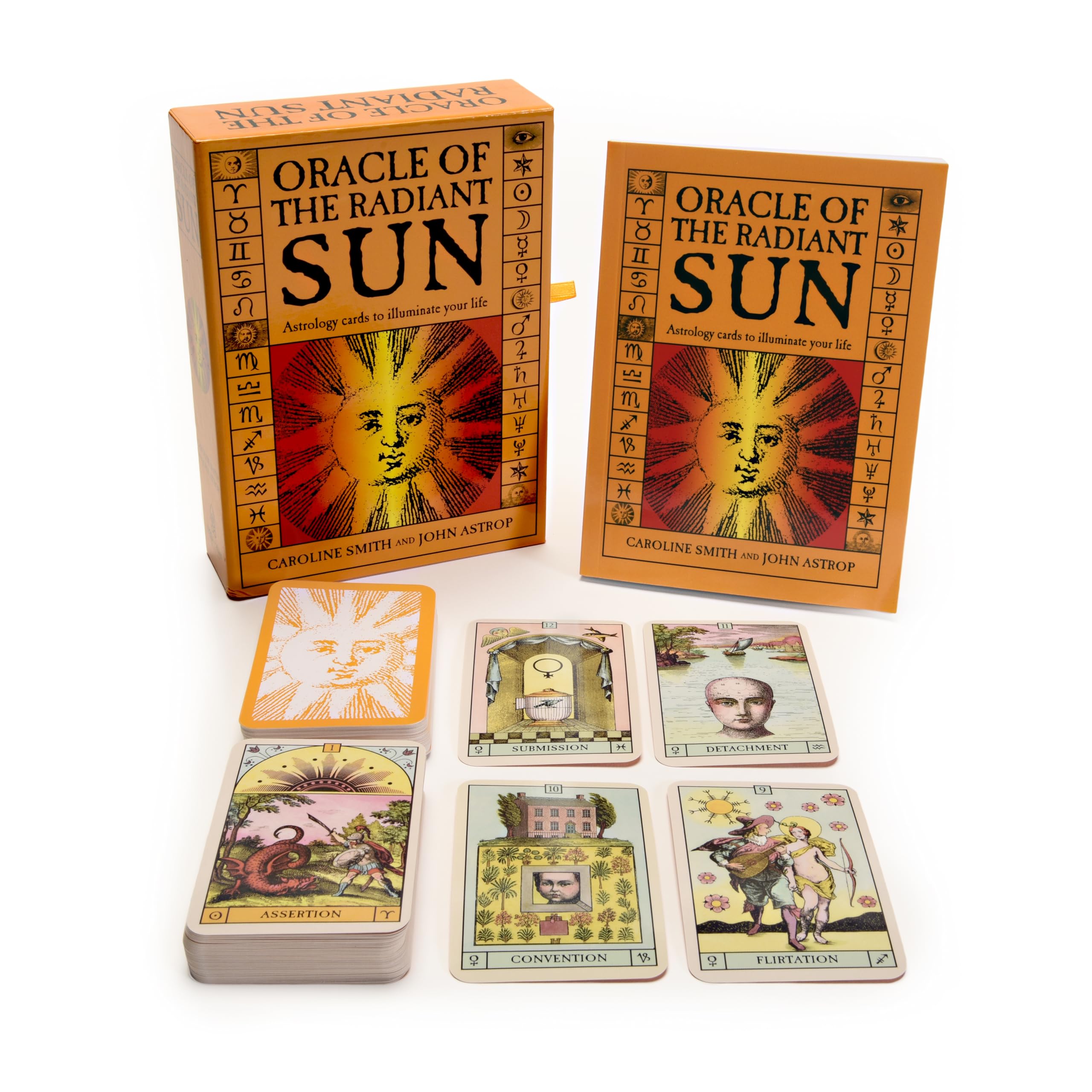

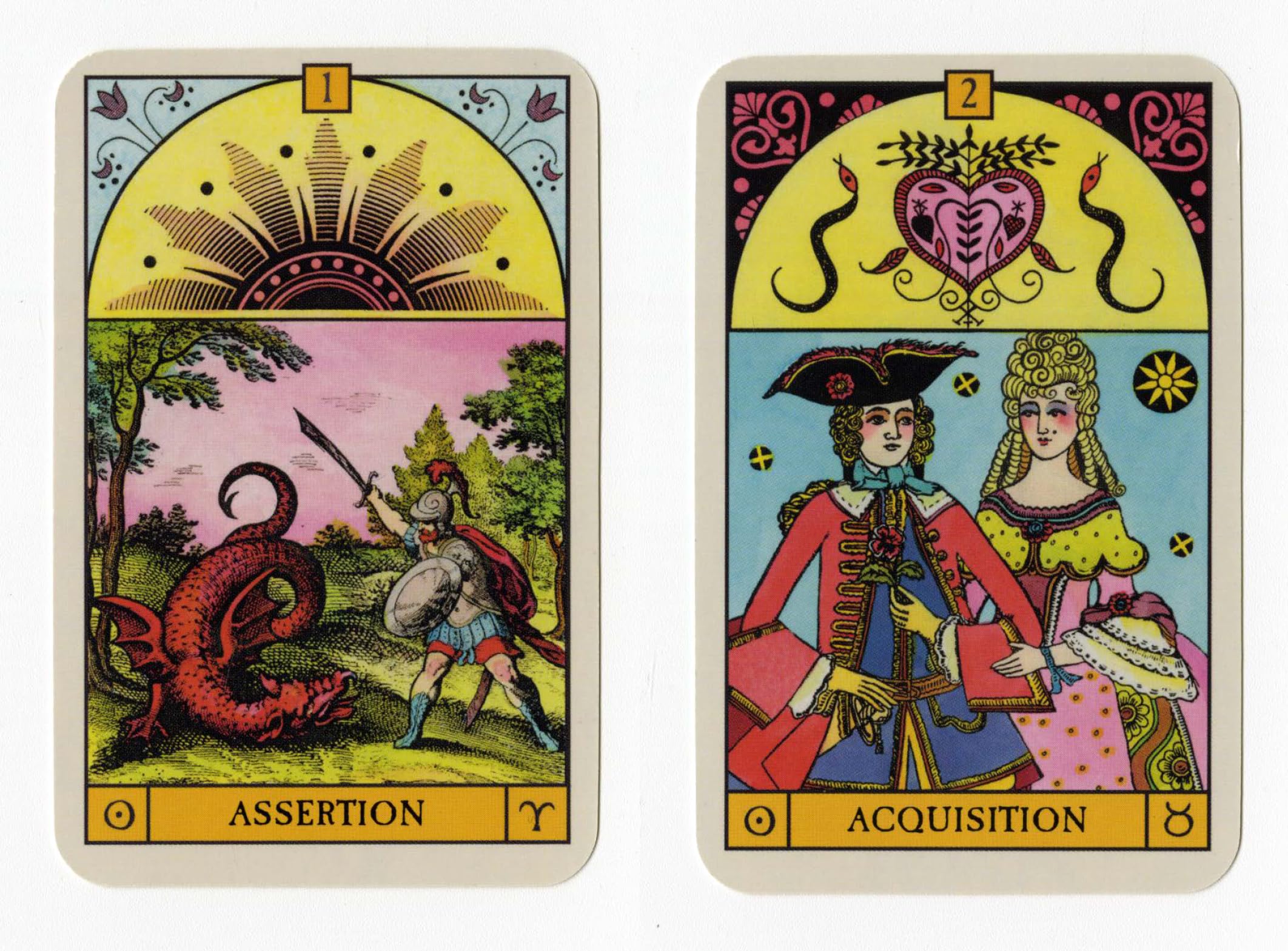

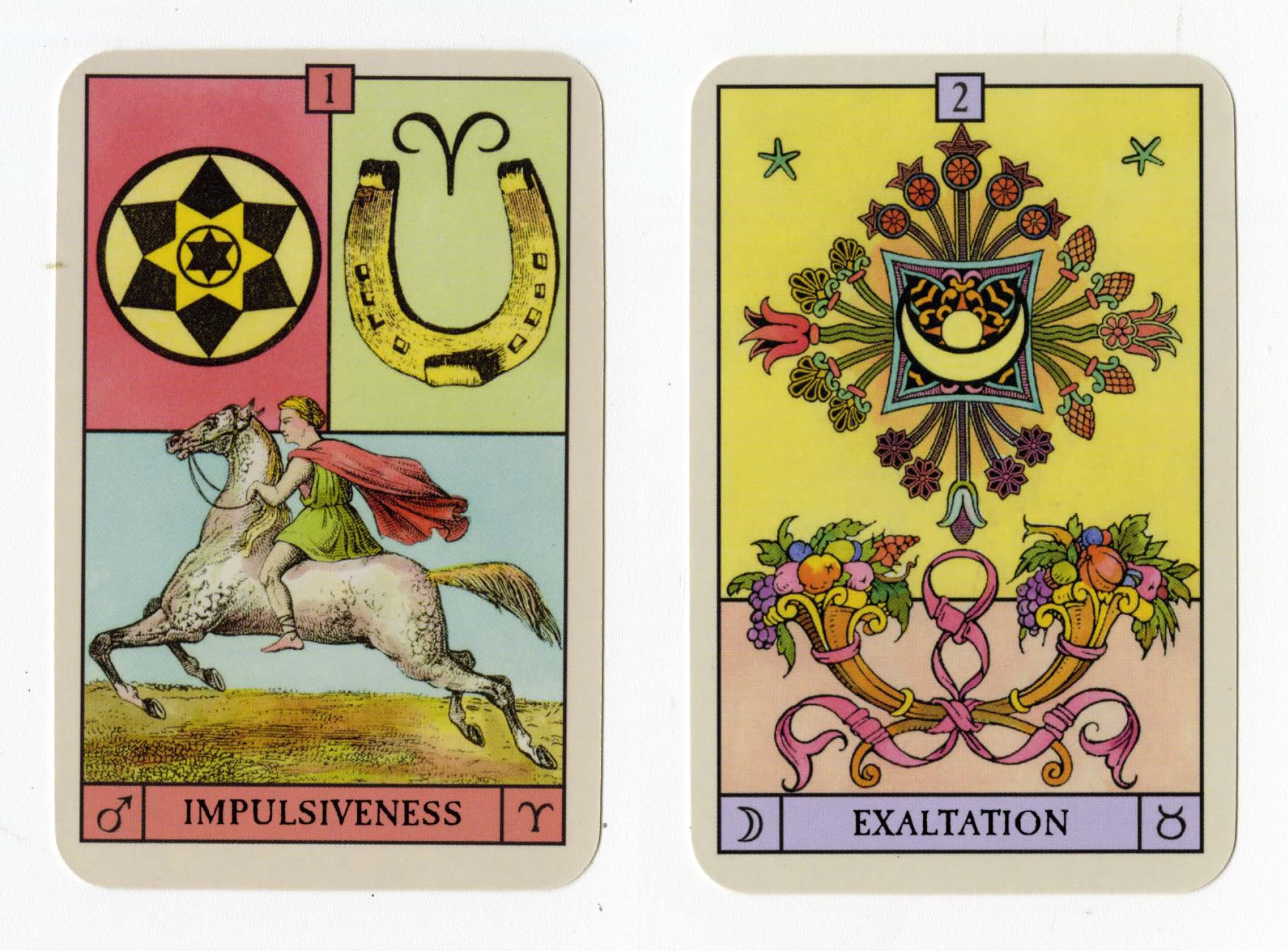
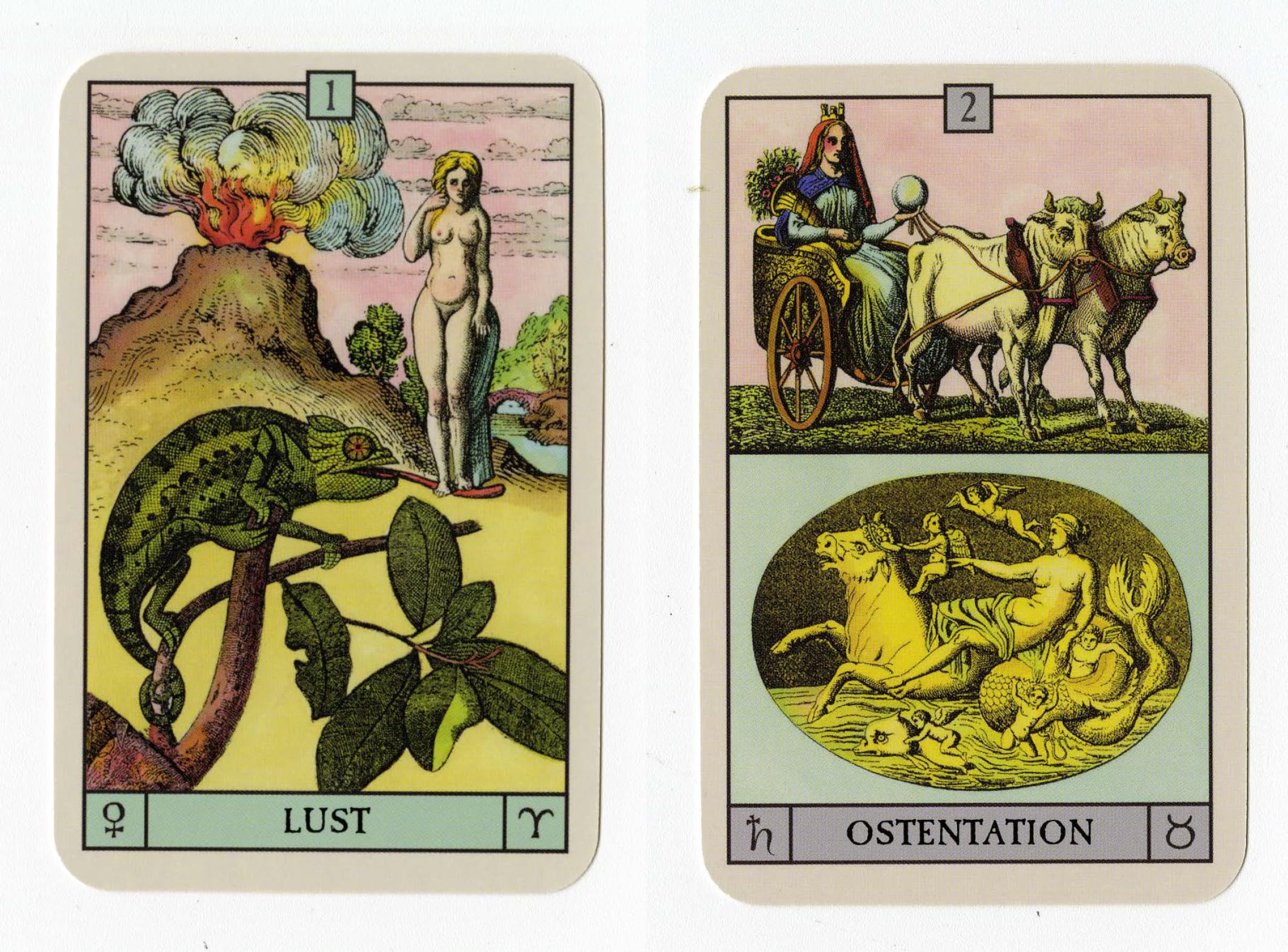
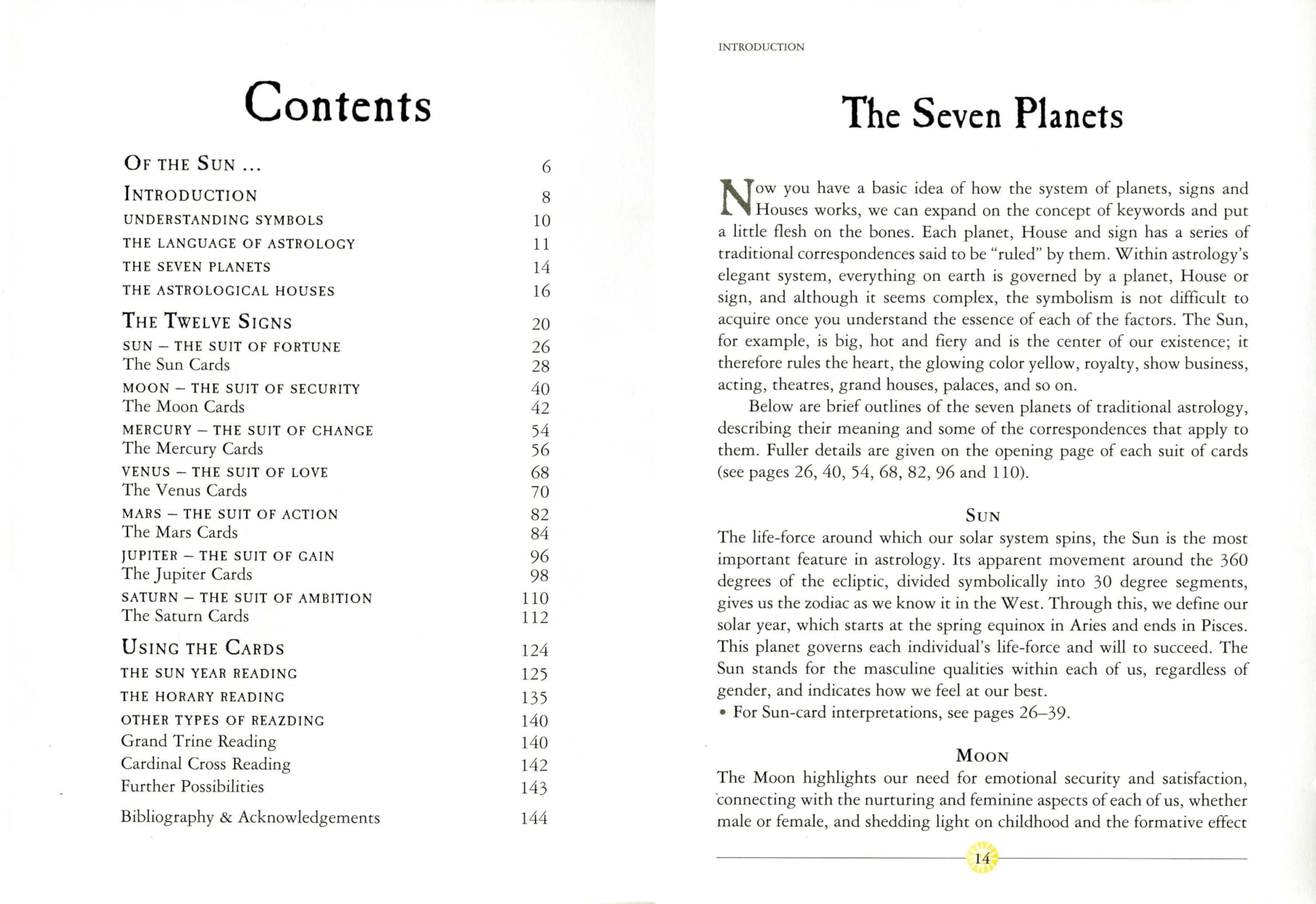
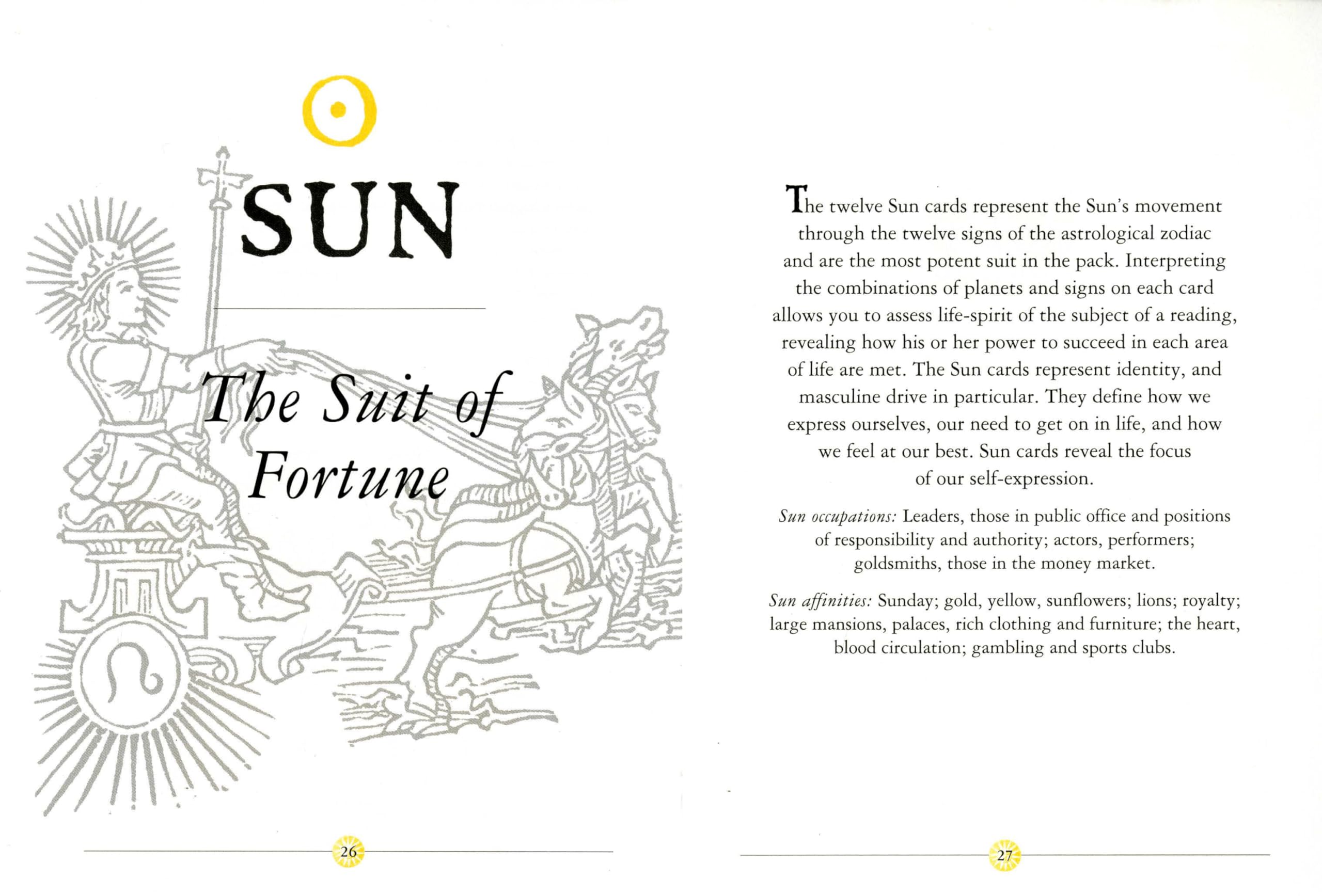
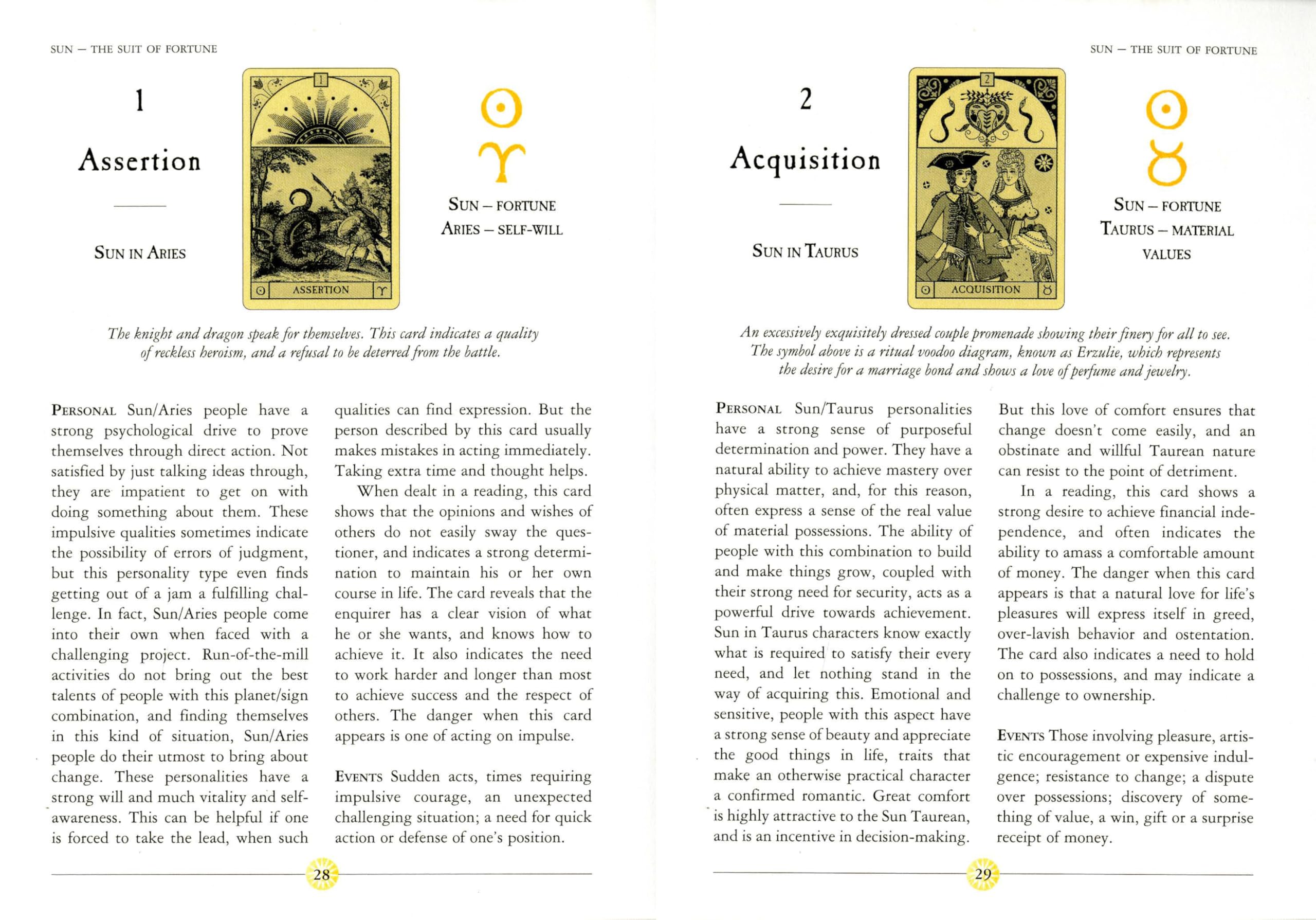
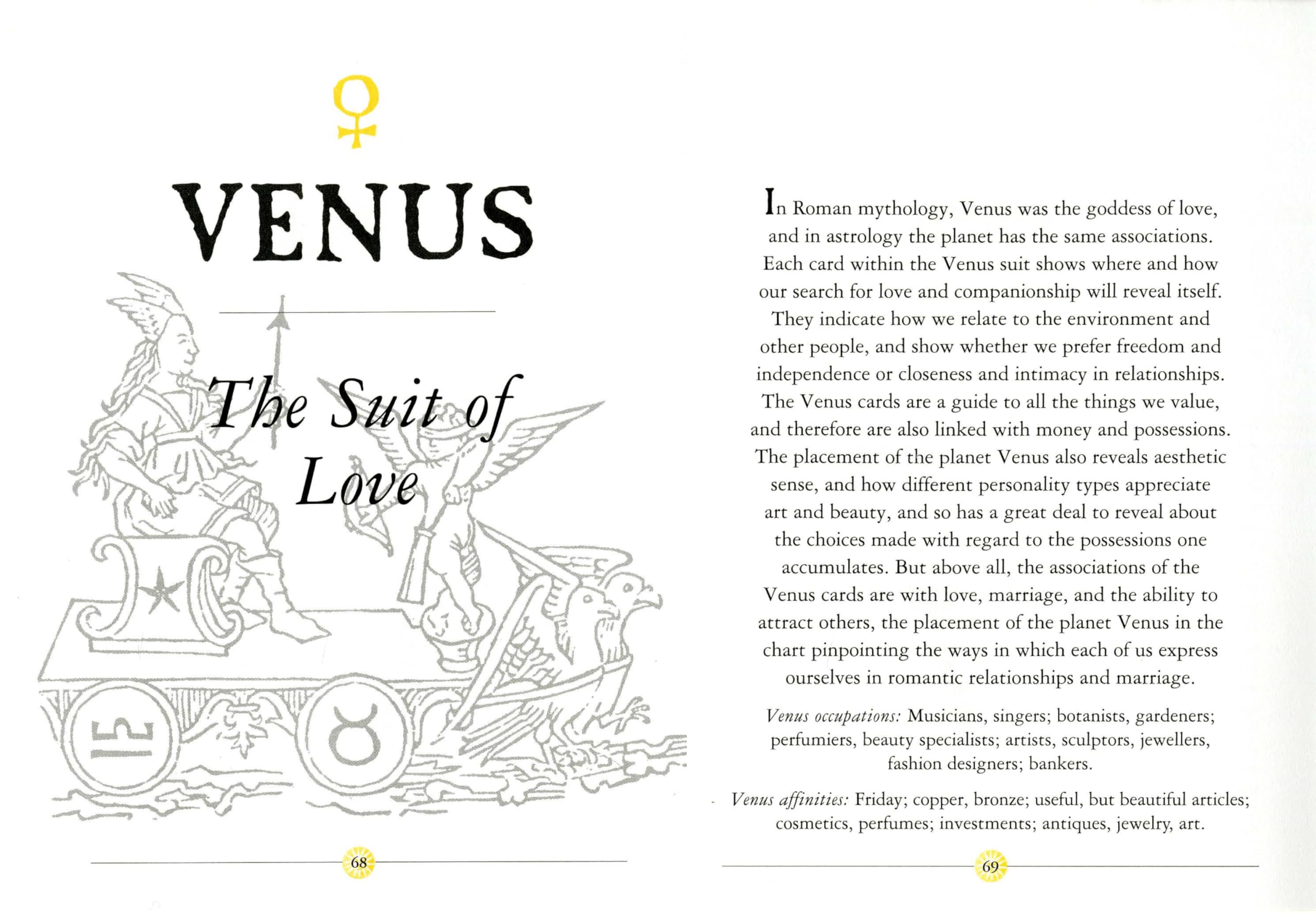
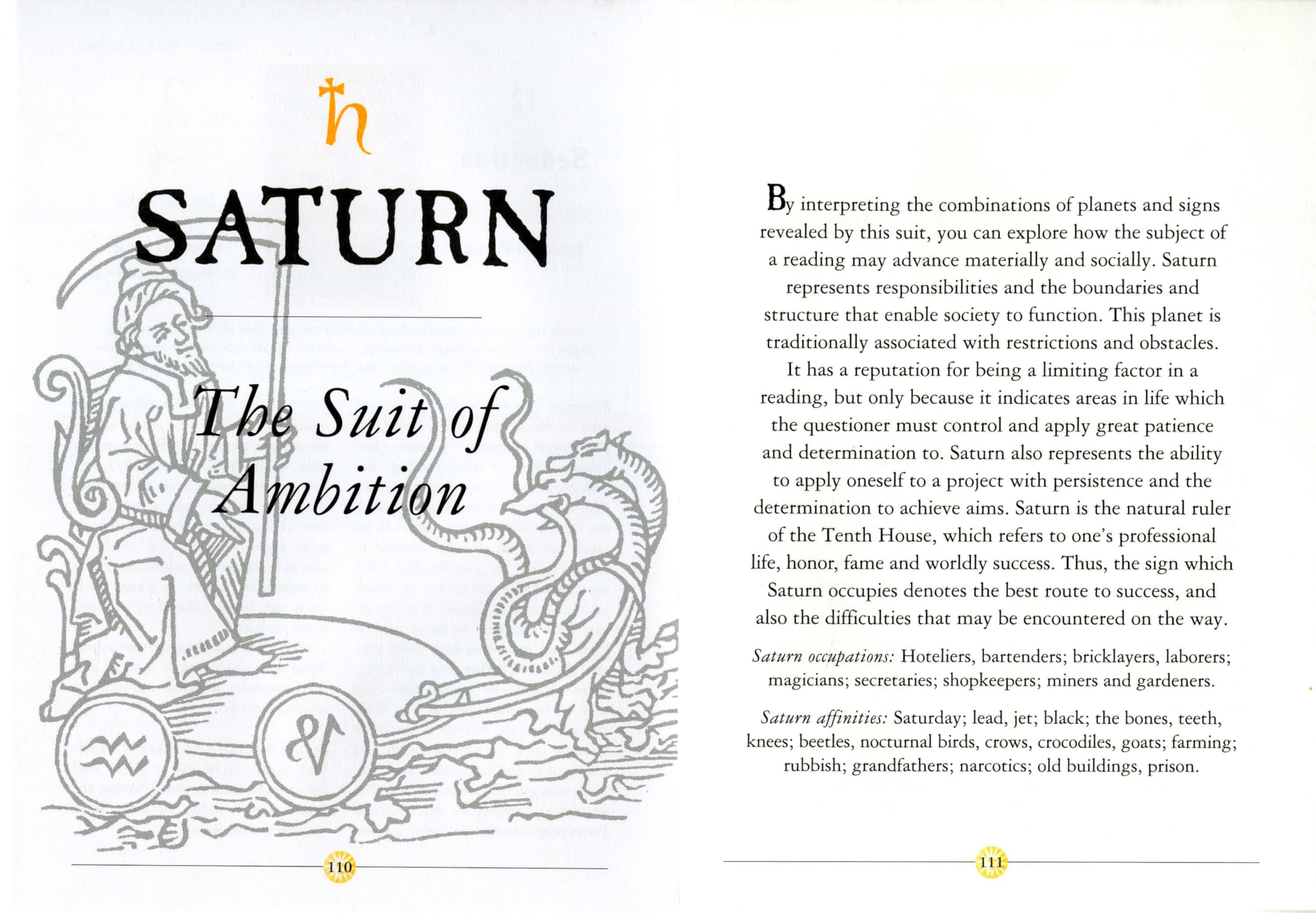
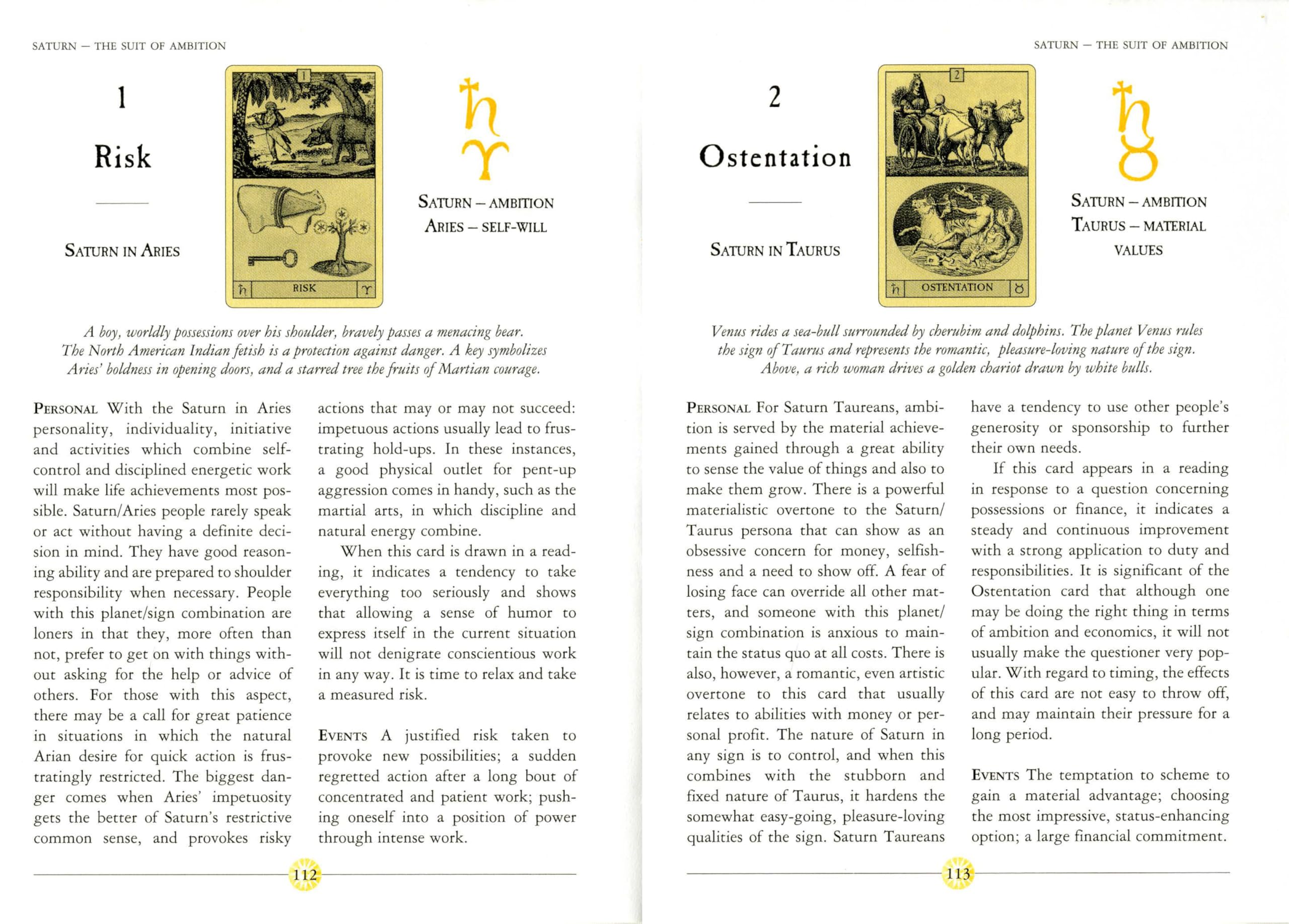
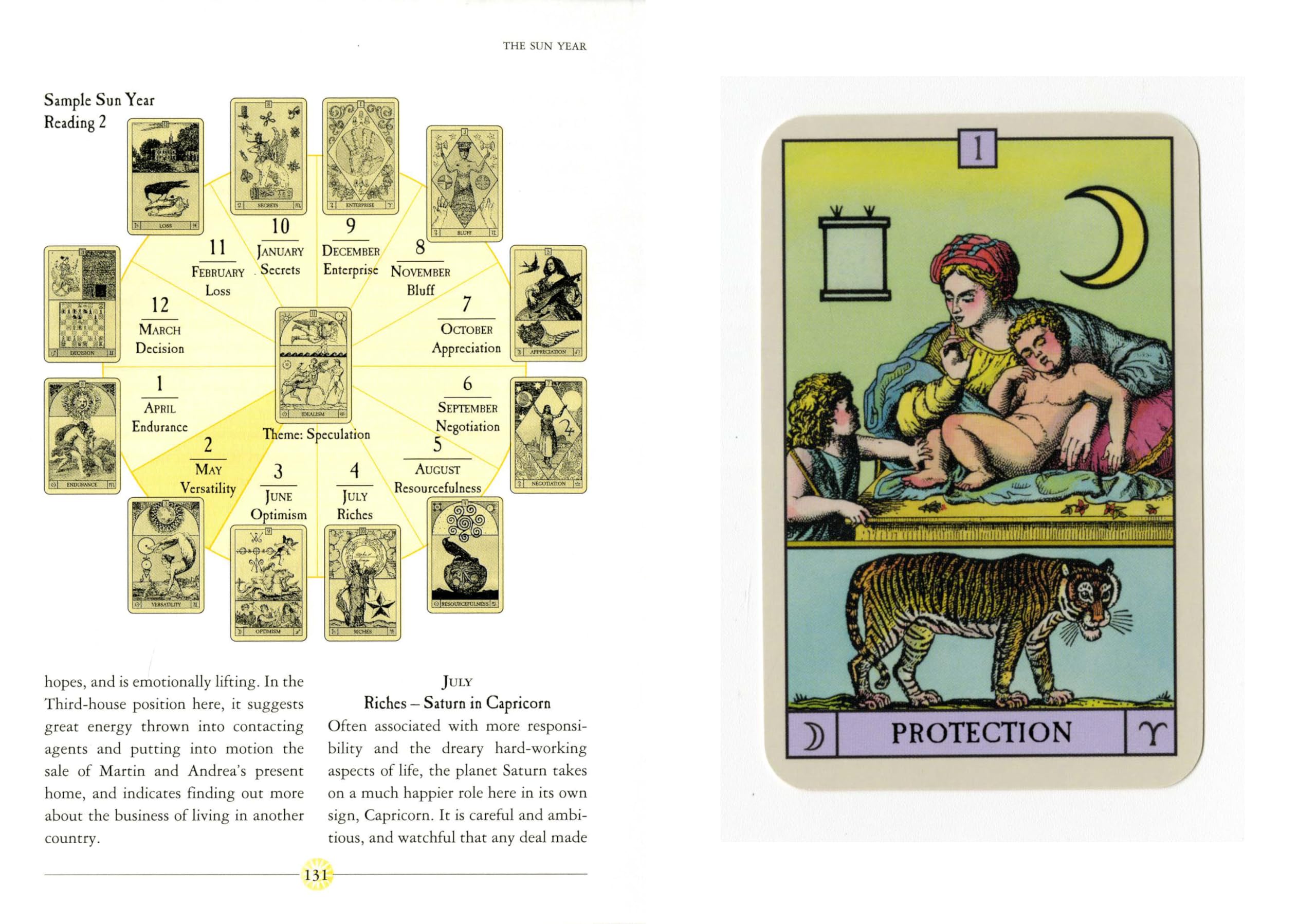
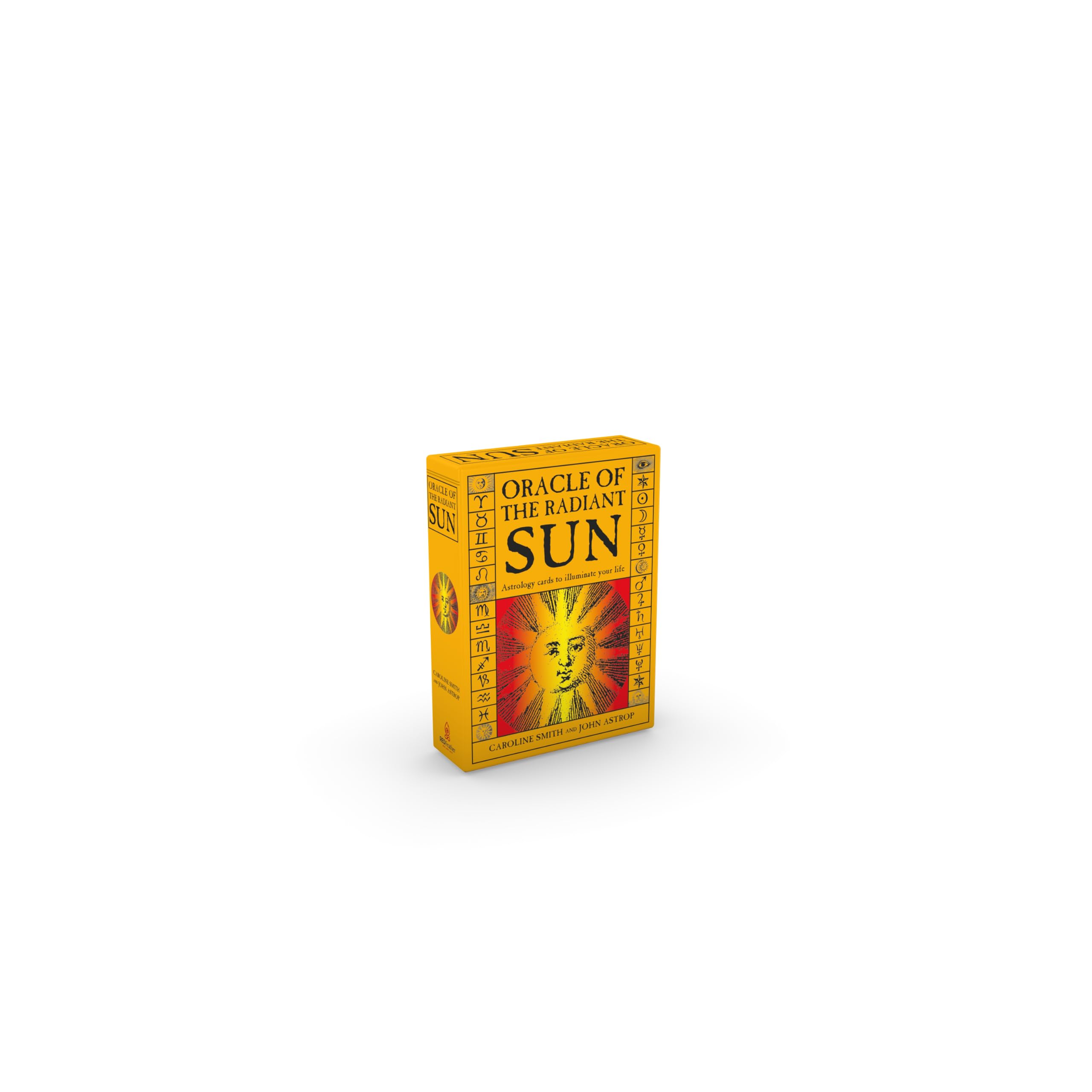


Full description not available
K**Y
Great Deck, thin card stock
I have had these cards for four hours and I'm in love with them already! As an astrologer turned tarot reader I find real depth of meaning in the cards and the suggested layouts are familair and useful. The book provides concise and accurate write-ups for the combination shown on each card, and the art work is beautiful and evocative. If I had one negative comment it would be that the cards feel thinner than the tarot and Oracle packs I have bought before, but not thin enought to put me off using them .I think these cards would be great for anyone with an interest in astrology and tarot, and I also think they would be great for astrology students to use as a learning aid for sign/house/ planet combos
J**N
Good oracle
Very good Oracle I don't know how accurate the readings are yet,can any of the others buyers tell me if it is accurate ?thank you!🤗
Z**A
Excellent
Beautifuul cards, with a lovely book.
C**E
Great for learning astrology, and accessible straight away for oracle readings
This very nicely boxed set comes with 84 cards and a 144-page book. Unlike this partnership’s other decks, the Moon Oracle (http://www.aeclectic.net/tarot/cards/moon-oracle/), the Runic Tarot (http://www.aeclectic.net/tarot/cards/runic/) (which isn’t actually a tarot, but an oracle) and the Elemental Tarot (http://www.aeclectic.net/tarot/cards/elemental/) the images here have a real Victoriana feel to them. The cards are relatively small at 10cm by 6,5cm (4 by 2 1/2 inches), which is a good thing in terms of shuffling, especially as there are 6 more cards than in a tarot deck. The card stock is sturdy and laminated, and the backs are non-reversible, done in a pale beige with a sun face in white.From the book: “This Sun oracle is a unique system based on eighty-four illustrated cards describing the meaning of the Sun, Moon, Mercury, Venus, Mars, Jupiter and Saturn in the twelve Houses and twelve signs of astrology, and sets out a clear and simple means of remembering and developing the interpretation. As in Horary astrology, the Sun oracle does not use the outer planets Uranus, Neptune and Pluto.”The cards are designed with seven different layouts, to make recognizing the different planets easier. For example, Mercury has a split layout, with different images on the two diagonal halves of the card. The Moon has two images divided into the top two thirds and bottom third of the card. Each card also has a thin white border, black edging, a number representing the planet’s place in the wheel of the year in a box at the top, and a planet, keyword and astrological sign along the bottom. Different pastel colours are also used for these symbolic elements, determined by planet – cream for Mercury, grey for Saturn, dusky pink for Mars, pale blue for Jupiter, lilac for the Moon, turquoise for Venus, and yellow for the Sun.The book gives a fourteen page introduction to the symbols used for astrological signs and planets, and summarises the qualities associated with the houses, planets and signs. It gives clear information on the oracle and the cards, and then has a detailed section for the cards – each card has a page with a yellowed/sepia image of the card, its associated astrological symbols, keywords for the planet and sign, a description of the image, “personal” associations (the longest section, describing the personality of someone with this astrological combination), and “events”.For example, “Sun in Gemini - Versatility. Sun – Fortune, Gemini – Mental Awareness. Image: A talented acrobatic figure walks on his hands in order to impress. On the horizon are the symbol of the sun and the alchemical sign for gold. The star above is another ancient symbol for the sun which is, of course, a star. Personal: The Sun/Gemini person’s basic drive is communication, and this card indicates a mind that is quick to catch on to things and has little difficulty in expressing new ideas clearly… Events: A social gathering, impressing other people; the need for a quick decision; an important conversation; reliable information; some contact with the media.”The last twenty pages of the book offer four astrological readings to use with the cards, as well as samples of how these can be interpreted. The first of these is a thirteen card Sun Year Reading with a card for each month of the year, and a final card for the overall emphasis or theme. The next is the Horary Reading, where twelve cards are dealt, but only the cards in the houses relevant to the question are read: “The question asked – ‘Will I get the job?’ necessitates that we turn face up the cards that relate to the following houses: First House: tells about the questioner. Sixth House: relates to work. Tenth House: the position of career and status. Fifth House: for luck and competition.” So, based on the descriptions of the houses at the start of the book, the reader decides which cards to interpret depending on the question asked. The third spread is the Grand Trine Reading, where again twelve cards are dealt, but only the cards in the first, fifth and ninth houses are interpreted. Finally, there is a Cardinal Cross Reading, this time only interpreting the cards in the first, fourth, seventh and tenth houses.Not knowing much about Horary Astrology, I haven’t tried any but the Sun Year spread from the book, but I have also used the cards in other spreads, both astrological (7 planet variations, Jupiter for expansion, Saturn for blocks etc, for example), and non-astrological (anything from a one-card draw for the day to a Celtic Cross). I find the cards work well in any type of reading, and the richly symbolic images are easy to interpret intuitively, as well as having good, detailed interpretations offered in the book. I have also looked at birth charts and drawn the cards associated with each of the planets represented in the deck, according to their sign in the birth chart. This gave a very interesting reading, including interpreting them in terms of the houses in which they are positioned. I can imagine that people with more of an astrological background could think of even more uses for these cards!As for the cards themselves, as I say they are rich in imagery and symbolism. There are realistic, Victorian-style images both pastoral and urban. There are symbols from Judaism and Islam, as well as Christian imagery. There are elements from Egyptian culture, as well as Greek myths and art. There are some picture-book elements, too, but always within the theme of elements which a Victorian might put on cards. The colours remain fairly pastel throughout, but with a lot of variety.So, to give a little taster from the book descriptions:“Moon in Pisces: Empathy. Above, in a charming country scene with a winding river, a child pets a large dog, the two enjoying just being together. Below, a golden-bird ornament symbolizes the spirit image linked to the material – gold. The ear represents an openness to calls for help.”“Mercury in Libra: Influence. The coiled serpent’s tongue is the astrological sigil for the planet Mercury. It represents smooth talk, guile, persuasion and temptation. In the first relationship, Adam and Eve walk in the garden, unaware of danger. Beneath the roses, thorns.”“Venus in Sagittarius: Flirtation. A travelling minstrel serenades a beautiful young huntress. The lute symbolizes the pleasure-loving nature of Venus, and the bow the far-seeking adventurousness of Sagittarius.”“Mars in Cancer: Quarrel. Two mounted figures squabble over a gold ring symbolizing betrothal. This image concerns families united or divided over relationships or inheritances. The classical busts glare at each other, reminders that this has happened before.”“Jupiter in Pisces: Seduction. In the centre, the first woman Eve plucking the apple from the tree of knowledge. Before her is the constellation Cassiopeia, associated by Kabalists with the second tarot trump, The High Priestess. Heart and flowers represent the mundane view of love.”“Saturn in Aries: Risk. A boy, worldly possessions over his shoulder, bravely passes a menacing bear. The North American Indian fetish is a protection against danger. A key symbolizes Aries’ boldness in opening doors, and a starred tree the fruits of Martian courage.”For some, who are passionate and knowledgeable about astrology, this deck’s associations may conflict with their own. However, the imagery is open to many different interpretations, and I don’t believe the cards are limited to astrological spreads and usage. And for someone not so well-versed in astrology the Oracle of the Radiant Sun provides useful visual keys to learning and understanding the planets, signs and houses.
H**N
Unusual, in depth, informative.....and one flaw.
The Oracle of the Radiant Sun is a fabulous deck of 84 cards. It is not a Tarot deck, but is based upon Astrology, and as such, it is one of the more unusual and in depth oracles that I have seen.The deck is broken down into 7 suits of 12 cards, each one based upon a planetary influence as follows: The Sun (suit of fortune), The Moon (suit of security), Mercury (suit of change), Venus (suit of love), Mars (suit of action), Jupiter (suit of gain) and Saturn (suit of ambition).Each of these suits is colour coded, but the nature of the suit it belongs to is also shown in the layout of the card - for example, all the Sun cards show a main picture in the bottom two thirds of the card, with another image in the top third of the card within a sort of crescent (rising sun) shaped space. Likewise, the Jupiter cards are all designed with a diamond shape on the card with the picture within this - as Jupiter is the suit of Gain, having a diamond (which corresponds to the suit of Diamonds in playing cards, which also relates to the suit of Pentacles in the Tarot i.e the suit of material things) I thought was a very nice touch as not only does it help you to easily identify which suit the card belongs to, but a lot of thought has gone into the symbolism behind the cards.As well as belonging to a planetary suit, each card within that suit cycles through the twelve signs of the zodiac. The glyph for the planet is shown on the bottom left of each card, and the sign of the zodiac each particular card relates to is shown in the bottom right hand corner of the card. Nice and easy to reference the pictures on the cards to the symbols and energies that each card represents. On each card there is also a keyword to it's meaning, which is derived from a combination of the suit and the sign of the zodiac that the card shows. For example, in the suit of Mercury (deck of change) the Leo card has a keyword of "drama" indicating that Mercury combining with the strength and fire of the lion is conceptualised as resulting in drama, or dramatic change. Likewise, the card for Virgo in the Mercury suit indicates "caution" as its key theme. Another couple of examples from different suits is that of Taurus in the suit of Mars (action) - whose keyword is "defence". The card depicts knights on horseback as well as coins and swords, indicating the defence of material things (as Taurus is an earth sign). The card for Venus in Aquarius describes "detachment" (the cool Aquarian trait) showing a head floating in water with a boat far behind it in the background - as Venus is the suit of love, then this would indicate a person or feeling of cool emotional detachment.In this way, the whole deck of cards is very well thought out, offering a huge scope for readings. The artwork on the cards is quite engaging, in a sort of "olde english" style, yet incorporates imagery as diverse as egyptian mummies to mermaids and domestic scenes. The cards themselves are small and neat, are easy to shuffle and fit nicely into even the smallest of palms. However they are not so small that they become unclear, as the text and images on them are clear and crisp. The book that accompanies the set is informative and gives good comprehensive coverage both of the basics behind the structure of the deck and the individual cards.However, I must finally come onto the one flaw mentioned in the title of my review. It is not a problem with the actual cards themselves, or with the structure or divinatory system of the deck, but with the packaging/presentation of the deck and book together as a product. This may be seen as a minor flaw by some, or a major one by others so I feel that it should be mentioned.The problem is that the design of the package is either trying to be too clever, or has just been very poorly thought out (I would like to try and give it the benefit of the doubt and say the former seeings as SO much thought has gone into the cards and book themselves), however I find that for me, the packaging just does not work.This is because the "box" is not actually a box, but more of a flap into which the cards fit (in two piles), which then folds over to join up with the rest of the "box" which is actually the book itself! If that sounds unclear, let me clarify by saying that the back cover of the book is joined to the rest of the box/flap and in fact the card housing is a rather clumsy attachment to the book!There are three problems with this, if you wish to keep the product nice and use it "as is". Once you have removed the cellophane, the "box" then does not close again as there is nothing to secure it shut. Secondly, once you have again removed the cellophane from the two piles of cards inside... they will no longer stay in their "slots" neatly without shooting everywhere when you then try and close the "box" (which doesn't close anyway, as previously mentioned!). Finally, the book is nigh on impossible to read sensibly whilst attached to the rest of the flap/cards paraphernalia, thus rendered it extremely frustrating to try and use without either becoming a contortionist or having to somehow keep the rest of the flap out of the way while you are trying to concentrate on what you are reading. I have to say neither option is very conducive to a smooth reading session, especially when you are first trying to learn the suits and the meanings of the cards!Of course, the obvious and most satisfying solution to this little problem is to simply take the initiative to separate the book from the rest of the package, cutting along the edge of where the book cover `ends' and then ditching the rest of the packaging and keeping the cards in a nice drawstring tarot pouch instead! This is quite easy to do (and perhaps that is what one is meant to do once you have undone it, I have no idea?) so on the one hand, this problem can be quite easily overcome, but I personally did find it rather a let down (it's just unnecessary to attach the book to the box!) especially as the rest of the design, ideas and functioning of the set is immaculate and faultless. It is for this reason, that as a rating for the product as a whole (instead of just the cards alone or the accompanying book) I have given this 4 stars and not 5, but that is the only reason it has received less, for if as much thought had been put into the final presentation and practicality of use of the product as the actual meanings of the oracle itself then it is easily a five-star product!Overall, packaging aside, this deck is a fantastic divinatory tool and a stunning variation from more traditional decks. A must for both Astrology and Tarot fans!!!
L**Y
Great for understanding traditional astrology, not so great as an oracle
I have used the cards and guidebook for 2 years now, and its helped me really understand astrology and my own chart. By presenting each planet and sign on a card( which in my opinion is how astrology decks should be created) it makes it super easy to understand not only your own chart, but current planetary positions ect. I love to use these for a monthly overview spread on the astrology placements, alongside pulling tarot. Reads really well!All this being said, the cards are SMALL and the quality is not that great, however the images are fantastic! If you have a specific need for this deck, i would highly recommend getting them, even if just a introduction to understanding signs, planets and houses.
Trustpilot
1 month ago
1 week ago